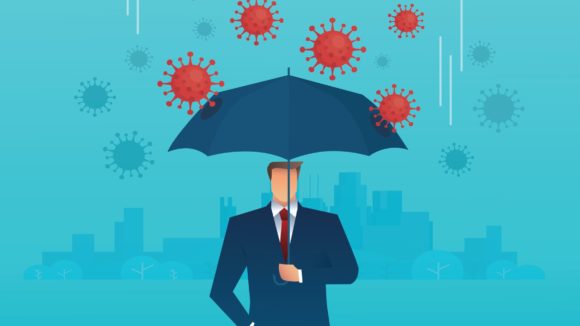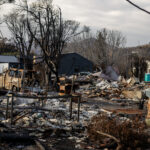As insurance professionals prepare for mask-free life and opportunities to exchange ideas in person, industry leaders took the virtual stage again at a midyear conference, recounting industry lessons learned during the 15 months since COVID distancing began.
John Neal, chief executive officer of Lloyd’s of London, Dino Robusto, chair and CEO of CNA, Peter Zaffino, president and CEO of AIG, and Joseph Brandon, president of Alleghany Corp., shared their thoughts on the industry’s resilience and adaptability, along with some reflections on areas for improvement at the 37th Annual Insurance Conference presented recently by S&P Global Ratings.
Neal began with the latter, addressing the importance of the customer experience and the question of how prepared society was for responding to systemic risk.
“When I think of the customer, it’s brought to the forefront the challenge for us in the industry to ensure that the products and services that we provide are truly relevant for the risks that our customers are encountering today,” he said, offering up the prospects of changing the products that the industry sells and simplifying the way products are presented to customers. “There’s a big question mark around the customer to start with for me,” he said, without specifically spelling out coverage gaps or areas of confusion.
Turning to the need for a broader societal discussion of “just how badly prepared society at large was for systemic risks,” Neal said, “We can’t constantly replicate a situation that major systemic risk has government’s rushing to borrow $15 trillion every time the issue happens. It can’t be the longer term answer.”
“We’ve got to put some power into better understanding, quantifying, and qualifying what systemic risk is,” he said.
Discussing lessons specific to the property/casualty insurance and reinsurance industry, Neal put “the power of digital” on the success side of the ledger, suggesting, however, that greater efforts around digitization are needed. “If we did not have, as an industry, the digital capability that we do have to communicate, to trade, and to operate as businesses, we’d have failed,” he said. “It’s given us a real lesson around our energy and our intention to digitize what we do.”
During a separate session, Alleghany’s Brandon shared similar lessons to Neal’s themes.
“Coverage grants and the language in coverage grants need to be clear and unambiguous,” said Brandon. In other words, he indicated: “Wordings really matter.”
He emphasized that this is not something to be done once and put aside until claims are filed. “Revisit [contract wordings] on a consistent basis and make sure you are comfortable with the promises you made.”
Turning to the idea of systemic risk, Brandon said, “You have to consistently think of where you can have aggregations of risk in your book: What risks are you taking whether they are in you underwriting account, your asset account, off balance sheet or in some other way that could aggregate and result a much larger loss you anticipated when pricing and allocating capital to support a line of business.
“If you put all that together, I think one of the big lessons to the world is that resilience and margin of safety is very important,” Brandon said. “In an effort to optimize returns with just-in-time inventories, and moving supply chains to low labor cost markets, and running high financial leverage…is not a very smart thing to do, especially in the insurance and reinsurance business where you assume risks for a living.”
“You need to have a margin of safety. Obviously the short-term cost of that margin of safety is you’re going to have lower returns. But the long-term benefit of that margin of safety is you get to survive…What you ultimately care about is long-term future value not short-term quarterly or annual returns.”
Robusto’s discussion of COVID takeaways focused on just how safe—and resilient—the industry proved itself to be.
“Against this incredible backdrop, this dramatic environment, we as an industry, effectively executed our business, our business model. We underwrote risks, paid our claims, and we did it seamlessly,” he said, pointing out that natural catastrophes losses totaled $80 billion last year, with COVID adding $30 billion.
“Take a look at our industry. As our host of this conference would attest, our capital—our backbone—is very financially strong, Robusto said.
“We have learned how to bring forward our resiliency in even more creative and innovative ways,” he continued referring to the fact that employees of all ages leveraged virtual meeting technologies, and the use of digital-knowledge sharing platforms accelerated. “Virtual claims adjusting procedures, virtual risk control inspections—as we now embrace physical interaction [back again], these things are going to remain as permanent tools that we can use…to make us even more resilient,” he said. “The ability to bring a global set of resources to bear on a singular risk solution for a broker, for a client—we did it in ways that we may never have done in a physical environment because it was cost prohibitive [and] it was time prohibitive.”
“Bottom line, the operational and financial resiliency of this industry in the face of the pandemic is really the legacy for me that I take away,” he said.
Zaffino agreed. “Companies of our size having to get 45,000 people working remotely in a very short period of time was a real test,” AIG’s leader said.
Noting that COVID hit different parts of the world at different times, having the ability to connect with businesses around the globe was important. “Whether that was in service centers in different parts of perhaps India, China, or whether it was how we actually, as an industry, were able to service business in our local geographies—that mattered,” he said. “We did not, as an industry do a lot of WebEx’s [before]. It’s so much face-to-face that I think we learned how to move the business forward in a manner that was very productive.”
Picking up on Neal’s remarks on the power of digital, Zaffino said that while many companies decided to perhaps hold off on digital transformation, AIG accelerated its efforts during the course of the pandemic.
Overall, “the industry as a whole found different ways in which they can service business at a higher level than they did pre-pandemic,” he said.
During a prior session, Greg Case, CEO of Aon, spoke about moving out of the pandemic not thinking not about accepted a “new normal,” but instead creating a “new better.” In particular, Case described Aon’s creation of a coalition of leading companies in across different industries – focused on sharing learnings from “work, travel and convene” efforts—to build the economy and their communities back better and stronger post-pandemic. (Initial insurance industry coalition member include CNA, Allstate and Zurich, according to a June 2020 media statement.)
“I think we’re going to see that across the globe,” Zaffino said, referring specifically to a “new better” for insurance carriers. “They’ll have more capabilities. They’ll have tested the way they service business. They’ll have additional KPIs…..It’s just good for the industry in terms of what we’ve learned in terms of how adaptive we were. And the reliance on more digital capabilities leads to better speed-to-execution, better service, better capabilities for the industry,” he said, predicting more “digital discussions” around how insurers transact business going forward.
This article first was published in Insurance Journal’s sister publication, Carrier Management.
Was this article valuable?
Here are more articles you may enjoy.



 Abbott Presses Congress for Legal Shield Over Preemie Baby Formula Lawsuits
Abbott Presses Congress for Legal Shield Over Preemie Baby Formula Lawsuits  Florida Jury Returns $779M Verdict for Family of Security Guard Killed at Gambling Cafe
Florida Jury Returns $779M Verdict for Family of Security Guard Killed at Gambling Cafe  State Farm Sued Over Policies Backed by Distressed Insurer PHL
State Farm Sued Over Policies Backed by Distressed Insurer PHL  California Again Delays Wildfire Protection Rules for Homes
California Again Delays Wildfire Protection Rules for Homes 


